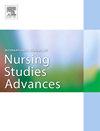Nurses' self-efficacy and outcome expectancy in evidence-based practice: Translation, construct validity and internal consistency of the Dutch scales
IF 3.1
Q1 NURSING
International Journal of Nursing Studies Advances
Pub Date : 2024-12-26
DOI:10.1016/j.ijnsa.2024.100286
引用次数: 0
Abstract
Background
Evidence-based practice (EBP) is crucial for appropriate, effective, and affordable care. Despite EBP education, barriers like low self-efficacy and outcome expectancy limit nurses’ engagement in EBP. Reliable scales are essential to evaluate interventions aimed at improving self-efficacy and outcome expectancy in EBP. The English Self-efficacy and Outcome Expectancy in EBP scales are psychometrically sound.
Objectives
To describe the translation, construct validity and internal consistency of the Dutch Self-efficacy and Outcome Expectancy in EBP Scales.
Method
The scales were translated forward and backward, piloted for comprehensibility and completeness and then administered among Dutch nurses and nursing students.
Results
Pilot testing confirmed comprehensibility, completeness, and relevance of the items. Confirmatory factor analysis (CFA) (n = 769) tested a second-order model for the Self-efficacy scale (Comparative Fit Index (CFI)=0.96, Tucker-Lewis Index (TLI)=0.95, Root Mean Square Error of Approximation (RMSEA)=0.06, Standardized Root Mean Residual (SRMR)=0.04) and a single-factor model for the Outcome Expectancy Scale (CFI=0.99, TLI=0.99, RMSEA=0.06, SRMR=0.01). Chi-squared tests remained significant. Hypothesis testing confirmed construct validity of the Self-efficacy (r = 0.77) and Outcome Expectancy Scale (r = 0.74). Both scales exhibited high internal consistency with McDonald's Omega and Cronbach's Alpha values above 0.95.
Discussion
Both scales exhibit theoretical soundness and positive fit indices. Significant chi-square tests and high correlations between weighted and unweighted scores support using unweighted scores over utilizing the estimated model to calculate weighted scores.
Conclusions
Construct validity and internal consistency of the Dutch Self-efficacy and Outcome Expectancy in EBP Scales are good. Future research should prioritize responsiveness and test-retest reliability.
循证实践中护士自我效能感与结果预期:荷兰量表的翻译、结构效度和内部一致性。
背景:循证实践(EBP)对于适当、有效和负担得起的护理至关重要。尽管进行了EBP教育,但自我效能感低、结果期望低等障碍限制了护士对EBP的参与。可靠的量表对于评估旨在提高EBP自我效能和结果预期的干预措施至关重要。EBP量表中的英语自我效能感和结果期望在心理测量学上是健全的。目的:描述荷兰语自我效能感和结果期望在EBP量表中的翻译、结构效度和内部一致性。方法:将量表前后翻译,进行可理解性和完整性试点,并在荷兰护士和护生中实施。结果:初步测试证实了项目的可理解性、完整性和相关性。验证性因子分析(CFA) (n = 769)检验了自我效能量表的二阶模型(比较拟合指数(CFI)=0.96,塔克-刘易斯指数(TLI)=0.95,近似均方根误差(RMSEA)=0.06,标准化均方根残差(SRMR)=0.04)和结果期望量表的单因素模型(CFI=0.99, TLI=0.99, RMSEA=0.06, SRMR=0.01)。卡方检验仍然显著。假设检验证实了自我效能感量表(r = 0.77)和结果期望量表(r = 0.74)的结构效度。两个量表与麦当劳的Omega和Cronbach’s Alpha值均在0.95以上,具有较高的内部一致性。讨论:两个量表都表现出理论合理性和正拟合指数。加权分数和未加权分数之间的显著卡方检验和高相关性支持使用未加权分数而不是利用估计模型来计算加权分数。结论:荷兰式自我效能和结果期望量表的结构效度和内部一致性较好。未来的研究应优先考虑响应性和重测信度。
本文章由计算机程序翻译,如有差异,请以英文原文为准。
求助全文
约1分钟内获得全文
求助全文
来源期刊

International Journal of Nursing Studies Advances
Nursing-General Nursing
CiteScore
5.80
自引率
0.00%
发文量
45
审稿时长
81 days
 求助内容:
求助内容: 应助结果提醒方式:
应助结果提醒方式:


